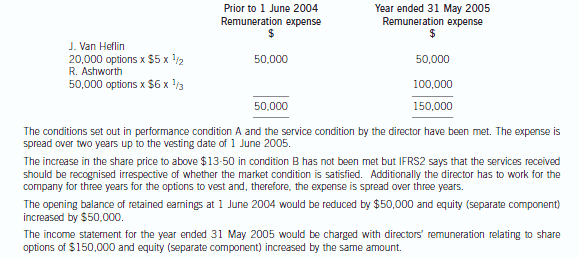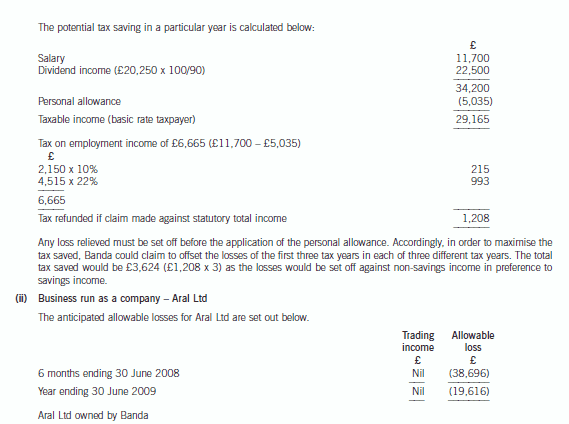ACCA和USCPA的具体区别有哪些,快来看看本篇文章!
发布时间:2020-02-20
随着国际之间经济的加强,各类国际财经证书也越来越多,像最近几年的ACCA和USCPA证书,可谓是受到众多考生的青睐。但是一些刚接触到财会领域的同学,对两者的异同有哪些,也表示疑惑,今天51题库考试学习网就为大家分享ACCA和USCPA的区别,希望能帮助到大家。
相对而言ACCA进入中国大陆地区教早,因此在中国ACCA比USCPA的认识程度更高。但是随着中国加入WTO之后,中国经济更国际化,以及中国公司在美国的发展,USCPA在中国的认识程度也越来越高。
ACCA和USCPA的具体区别:
1科目不同:ACCA考试科目一共有13门,USCPA只考4门。
2周期不同:由于ACCA科目较多,因此通过的周期较长,一般为2年,USCPA采用计算机考试,每年有4个Windows,每个Window为2个月,通常4-6个月可以通过4门的考试拿到资格。
3适用范围不同:ACCA适用于UK GAAP和国际会计准则,USCPA适用于US GAAP。
两者间究竟应该怎么选?
USCPA考试有学分要求,考试周期短易通过:更适合留学生和上班族,还可以免考ACCA八门。
从报考要求来看,USCPA对学历和学分都有要求,必须是已经获得或即将取得学士学位,且需要修满150个学分(个别州:缅因州、加州等除外),所以大学的时候可以先学起来;
而从考试周期来看,USCPA显然就轻松多了,共计4门科目,且除了3、6、9、12月及节假日均可预约报考。采用计算机考试,最快4-6个月就可以通过4门的考试。美国的留学生更无需多言,为了就业考出USCPA几乎成为商科生的“标配”。
从职业发展角度来说,美国是世界上最大的经济体,相应的财务要求最高,USCPA是美国的注册会计师,GAAP准则一直引领者国际会计的发展趋势,且具备全球签字权。美资公司在世界分布广泛,因此USCPA在国际认可度高,全球就业之广,在世界各地享有与众不同的威望,收入也高。对移民和留学北美、欧洲、澳洲都是最佳的加分证照。USCPA持证人一般从事内部审计师、法规遵从经理、财务分析师、外部审计师等,对职场人士来说,是升职加薪的必备执照。
而ACCA考试门槛较低,无特殊要求,考试周期长,更适合时间充裕的大学生。
ACCA和USCPA一样,都是全英文考试。ACCA大学即可报考,在毕业时通过全科,在应届毕业生中,薪资很有竞争力。ACCA课程中引入了作为未来的高级会计师所必须的更高级的职业技能和知识技能,相当于硕士阶段的课程难度,但正是因为如此世界上大部分企业均认可ACCA。
USCPA和ACCA,这两个证书对于财务人来说,都有不错的辅助作用。鉴于商业和会计业务渐渐全球化的趋势,具备一个国际化的财务证书,对于年轻财会人才在职业方面的发展和提升,具有极其关键的重要性。
又到了与大家说再见的时候了,以上信息就是51题库考试学习网针对小伙伴们的问题做出的详细解答,相信小伙伴们看过之后也有了一定的了解了吧,如果大家还有什么疑问,欢迎大家前来咨询51题库考试学习网,我们会第一时间为大家答疑解惑。
下面小编为大家准备了 ACCA考试 的相关考题,供大家学习参考。
(b) a discussion (with suitable calculations) as to how the directors’ share options would be accounted for in the
financial statements for the year ended 31 May 2005 including the adjustment to opening balances;
(9 marks)
(b) Accounting in the financial statements for the year ended 31 May 2005
IFRS2 requires an expense to be recognised for the share options granted to the directors with a corresponding amount shown
in equity. Where options do not vest immediately but only after a period of service, then there is a presumption that the
services will be rendered over the ‘vesting period’. The fair value of the services rendered will be measured by reference to
the fair value of the equity instruments at the date that the equity instruments were granted. Fair value should be based on
market prices. The treatment of vesting conditions depends on whether or not the conditions relate to the market price of the
instruments. Market conditions are effectively taken into account in determining the fair value of the instruments and therefore
can be ignored for the purposes of estimating the number of equity instruments that will vest. For other conditions such as
remaining in the employment of the company, the calculations are carried out based on the best estimate of the number of
instruments that will vest. The estimate is revised when subsequent information is available.
The share options granted to J. Van Heflin on 1 June 2002 were before the date set in IFRS2 for accounting for such options
(7 November 2002). Therefore, no expense calculation is required. (Note: candidates calculating the expense for the latter
share options would be given credit if they stated that the company could apply IFRS2 to other options in certaincircumstances.) The remaining options are valued as follows:

(iii) cheese. (4 marks)
(iii) Cheese
■ Examine the terms of sales to Abingdon Bank – confirm the bank’s legal title (e.g. if GVF were to cease to trade
and so could not exercise buy-back option).
■ Obtain a direct confirmation from the bank of the cost of inventory sold by GVF to Abingdon Bank and the amount
re-purchased as at 30 September 2005 (the net amount being the outstanding loan).
■ Inspect the cheese as at 30 September 2005 (e.g. during the physical inventory count) paying particular attention
to the factors which indicate the age (and strength) of the cheese (e.g. its location or physical appearance).
■ Observe how the cheese is stored – if on steel shelves discuss with GVF’s management whether its net realisable
value has been reduced below cost.
■ Test check, on a sample basis, the costing records supporting the cost of batches of cheese.
■ Confirm that the cost of inventory sold to the bank is included in inventory as at 30 September 2005 and the
nature of the bank security adequately disclosed.
■ Agree the repurchase of cheese which has reached maturity at cost plus 7% per six months to purchase invoices
(or equivalent contracts) and cash book payments.
■ Test check GVF’s inventory-ageing records to production records. Confirm the carrying amount of inventory as at
30 September 2005 that will not be sold until after 30 September 2006, and agree to the amount disclosed in
the notes to inventory as a ‘non-current’ portion.
(ii) Briefly explain the implications of Parr & Co’s audit opinion for your audit opinion on the consolidated
financial statements of Cleeves Co for the year ended 30 September 2006. (3 marks)
(ii) Implications for audit opinion on consolidated financial statements of Cleeves
■ If the potential adjustments to non-current asset carrying amounts and loss are not material to the consolidated
financial statements there will be no implication. However, as Howard is material to Cleeves and the modification
appears to be ‘so material’ (giving rise to adverse opinion) this seems unlikely.
Tutorial note: The question clearly states that Howard is material to Cleeves, thus there is no call for speculation
on this.
■ As Howard is wholly-owned the management of Cleeves must be able to request that Howard’s financial statements
are adjusted to reflect the impairment of the assets. The auditor’s report on Cleeves will then be unmodified
(assuming that any impairment of the investment in Howard is properly accounted for in the separate financial
statements of Cleeves).
■ If the impairment losses are not recognised in Howard’s financial statements they can nevertheless be adjusted on
consolidation of Cleeves and its subsidiaries (by writing down assets to recoverable amounts). The audit opinion
on Cleeves should then be unmodified in this respect.
■ If there is no adjustment of Howard’s asset values (either in Howard’s financial statements or on consolidation) it
is most likely that the audit opinion on Cleeves’s consolidated financial statements would be ‘except for’. (It should
not be adverse as it is doubtful whether even the opinion on Howard’s financial statements should be adverse.)
Tutorial note: There is currently no requirement in ISA 600 to disclose that components have been audited by another
auditor unless the principal auditor is permitted to base their opinion solely upon the report of another auditor.
(b) The tax relief available in respect of the anticipated trading losses, together with supporting calculations and
a recommended structure for the business. (16 marks)


Aral Ltd owned by Banda
The losses would have to be carried forward and deducted from the trading profits of the year ending 30 June 2010.
Aral Ltd cannot offset the loss in the current period or carry it back as it has no other income or gains.
Aral Ltd owned by Flores Ltd
The two companies will form. a group relief group if Flores Ltd owns at least 75% of the ordinary share capital of Aral
Ltd. The trading losses could be surrendered to Flores Ltd in the year ending 30 June 2008 and the year ending
30 June 2009. The total tax saved would be £11,079 ((£38,696 + £19,616) x 19%)
Recommended structure
The Aral business should be established in a company owned by Flores Ltd.
This will maximise the relief available in respect of the trading losses and enable relief to be obtained in the period in
which the losses are incurred.
Tutorial note
The whole of the loss for the period ending 30 June 2008 can be surrendered to Flores Ltd as it is less than that
company’s profit for the corresponding period, i.e. £60,000 (£120,000 x 6/12).
声明:本文内容由互联网用户自发贡献自行上传,本网站不拥有所有权,未作人工编辑处理,也不承担相关法律责任。如果您发现有涉嫌版权的内容,欢迎发送邮件至:contact@51tk.com 进行举报,并提供相关证据,工作人员会在5个工作日内联系你,一经查实,本站将立刻删除涉嫌侵权内容。
- 2020-01-10
- 2020-01-10
- 2020-01-10
- 2020-04-23
- 2020-03-07
- 2020-01-10
- 2020-01-10
- 2020-01-10
- 2020-01-10
- 2020-01-10
- 2020-01-10
- 2020-01-10
- 2020-02-05
- 2020-01-10
- 2020-01-10
- 2020-01-09
- 2020-03-07
- 2020-01-31
- 2020-01-10
- 2020-01-10
- 2020-05-08
- 2020-02-02
- 2020-04-25
- 2020-05-14
- 2020-01-10
- 2020-01-10
- 2020-03-08
- 2020-01-09
- 2020-01-09
- 2020-01-10